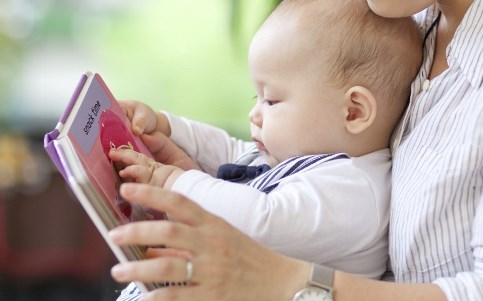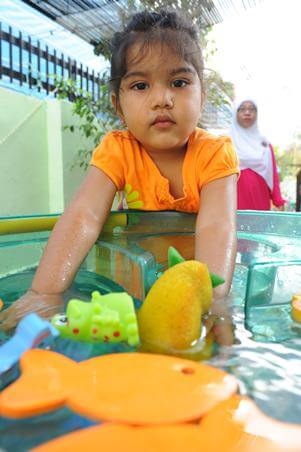 | All children love water!
For your toddler, fill a large container with water and add food colouring. Provide a variety of objects such as sponges, different sized containers, sieves, funnels, whisks, scoops, measuring cups, plastic balls, large container with water and add food colouring. Let your toddler immerse in the world of discovery with endless possibilities to stimulate their creativity and thinking. Manipulating the different objects can also help with baby's eye-hand coordination. |
| | |
Teach problem solving skills with simple toys!
Let baby see you roll a ball into an empty cardboard box. As she makes attempts to retrieve the ball from the box, verbalise her actions! "Are you trying to reach for the ball inside the box?" To make the activity a little more challenging, cover the box with a cloth and let baby figure out a solution! | 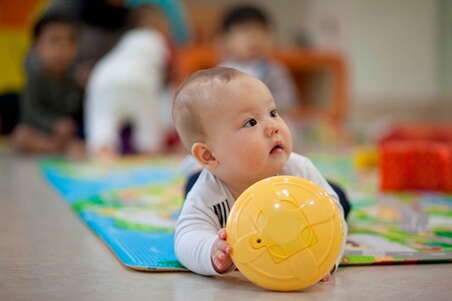 |
| | |
Count the beats to favourite tunes!
Music is full of mathematical concepts. Help your baby understand this relationship by bouncing along to the rhythm of her favourite song and counting the beats aloud! |  |
| | |
Make snack time a fun time to practice counting.
With your older child, ask her how many biscuits she would like. She may say 'five'. Place some biscuits in a bowl. Count together with her until she has five biscuits. You can add variety by getting her to top a raisin on each biscuit.
~ Ms Peggy Zee, Early Childhood Mathematics Specialist | 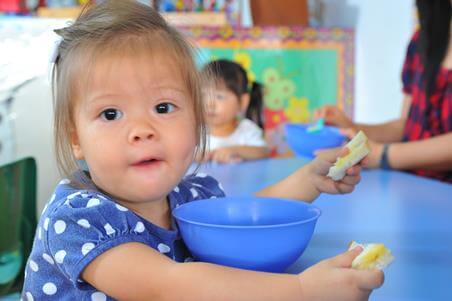 |
| | |
Go on a colour hunt in the neighbourhood!
While strolling in the park or neighbourhood with baby, point out the different colours that you can see together! Help baby make connections between the name of the colours and the objects he sees. Play a game of 'I spy with my little eye something that is green' and let your child guess! | 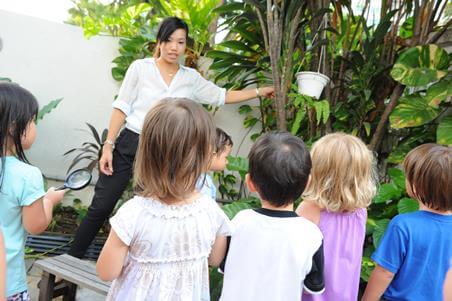 |
| | |
Textures, textures, textures!
Make a texture book for baby by pasting materials of different textures! Materials can range from sand grains, dried leaves, felt paper to sponges! Guide baby's hands over the different materials and talk to her about what she can feel! | 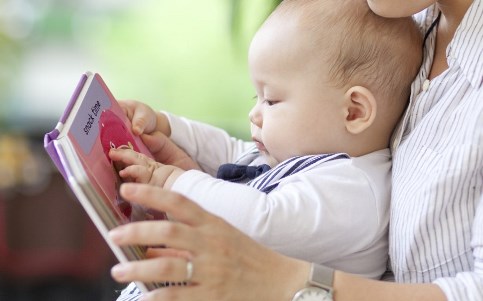 |
| | |
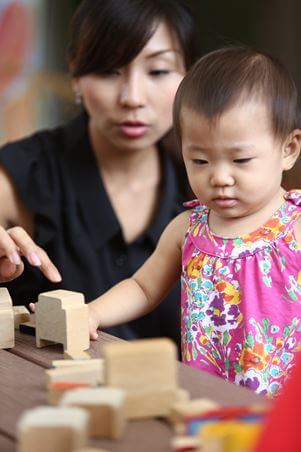 | Create structures with recycled materials!
Provide your child with cardboard boxes, cartons and drinking cups of all shapes and sizes. Create structures together and help your child understand how straight sides fit together, straight edges join up at corners, small shapes won't support bigger shapes of increasing size, and shapes with curved edges can't be used as supports.
~ Dr Pamela Sharpe, former Associate Professor in the Early Childhood and Specialised Education Academic Group at NIE/NTU Singapore |
| | |
 | Say hello to neighbours!
Bring your child through the neighbourhood and let her meet and greet the neighbours. Oranise play dates with other children. This creates opportunities to interact and socialise with peers.~ Ms N. Pushpavalli, Principal of Ramakrishna Mission Sarada Kindergarten |
| | |
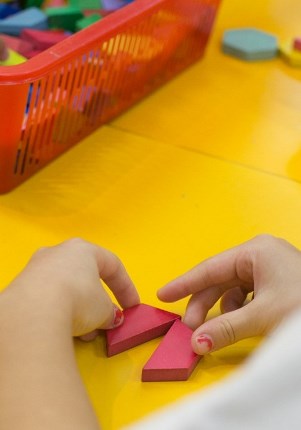 | Make pictures with shape cut-outs!
Introduce shapes by cutting them out from newspapers and magazines. Talk about these shapes and make pictures using these flat shapes with your child! Language can help to distinguish shapes and sizes through description and further investigation. You can also used coloured stickers of different shapes for this activity!
~ Dr Pamela Sharpe, former Associate Professor in the Early Childhood and Specialised Education Academic Group at NIE/NTU Singapore |
| | |
Tell stories about shapes and numbers!
Engage your child in nursery rhymes and songs or tell stories involving shapes, sizes and numbers. For example, "Look, there's my hat" and "Home sweet home" by Maureen Roffey or "Rosie's walk" by Pat Hutchins.
~ Dr Pamela Sharpe, former Associate Professor in the Early Childhood and Specialised Education Academic Group at NIE/NTU Singapore | 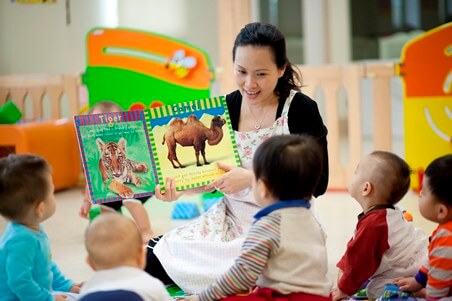 |
| | |
Let your child crawl freely around the house
and in safe environments. Let her explore items in the house, like pots and pans, but always keep small parts and dangerous fluids away. Supervise your child at all times.
~ Ms N. Pushpavalli, Principal of Ramakrishna Mission Sarada Kindergarten | 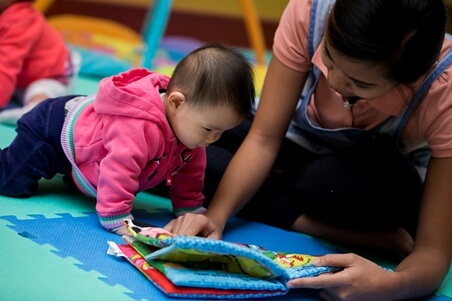 |
| | |
Model a sense of enquiry!
Children learn enquiry skills from adults who model these skills. Parents and grandparents who are observant, curious, ask questions, and are excited about learning are more likely to pass on these traits to their children and grandchildren.
~ Mrs Jacqueline Chung, Senior Principal, St. James' Church Kindergarten | 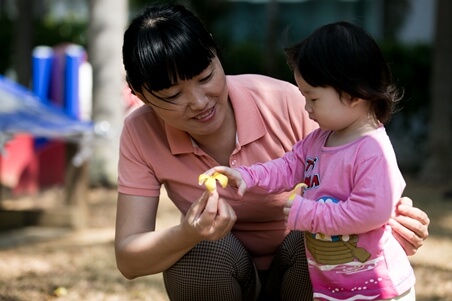 |
| | |
Learn categorising through sorting laundry together.
Let your child help you sort the laundry into coloured or non-colouored; machine wash or delicates for hand wash; heavily soiled or quite clean; etc. Teaching children how to categorise can help develop higher order thinking skills. Have fun doing this!
~ Mrs Jacqueline Chung, Senior Principal, St James' Church Kindergarten | 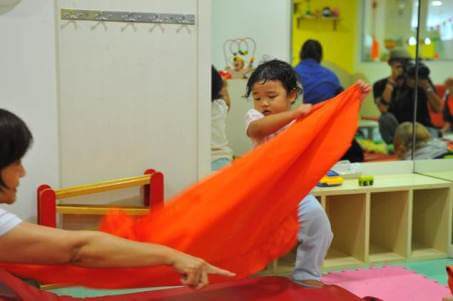 |
| | |
Same or different.
Draw two faces, leaving an eye out in one. Ask your child whether the two pictures are the same or different. This is a great activity to develop visual discrimination skills which are important for recognising numerals and the letters of the alphabet. | 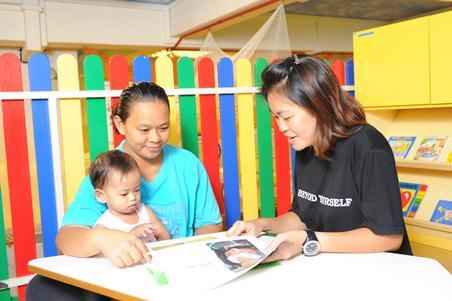 |
| | |
Sort shapes!
Provide cut-outs of various shapes such as squares, triangles, stars, rectangles and circles. Let your child have a go at matching them. Have fun decorating the shapes using coloured markers. | 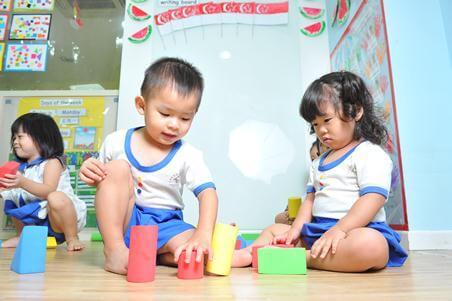 |
| | |
Predict and experiment.
Ask your older toddler to predict how many cups of water are needed to fill the container. Then let her pour and count with you. Have fun using different shaped containers! | 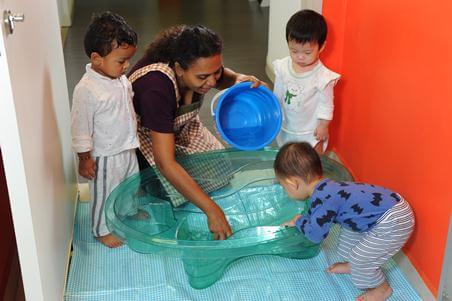 |
| | |
Foster a number sense.
There are many ways to develop your child's number sense, by counting the different parts of the body, classifying and categorising objects (e.g. putting all the teddy bears in one group and trucks in another), and drawing attention to the attributes or physical characteristics of objects (e.g. "this is yellow ball"). | 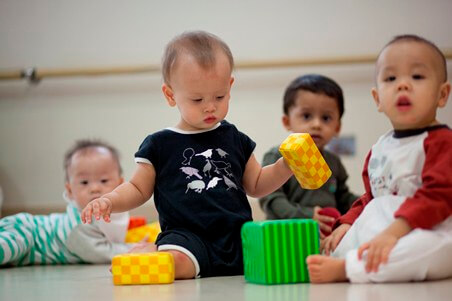 |
| | |
Water play to build early numeracy and science.
Fill a basin with water and provide different types of materials. Materials that are heavy and light, absorbent and non-absorbent and different shapes and sizes. Let your child have fun exploring and experimenting with materials. | 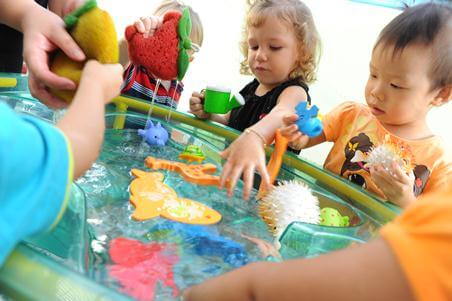 |
| | |
Experience the great outdoors.
The outdoors have plenty to offer to enhance your child’s learning and development. Use the weekends to visit places like the beach, the Botanic Gardens and the parks. You can stimulate your child’s thinking and language skills when you expose her to the different sights, sounds and movements while talking about them. | 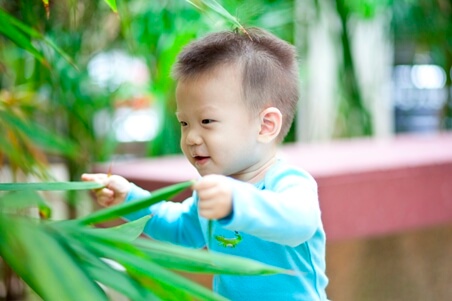 |
| | |
Nesting cups are interesting.
Give your child a set of nesting cups or blocks to play with. Allow your child the time to discover and engage with the different sized cups in any way she wants. She will enjoy taking these out and putting them back after working out how the different sizes fit. This reinforces mathematical concepts and problem solving skills. | 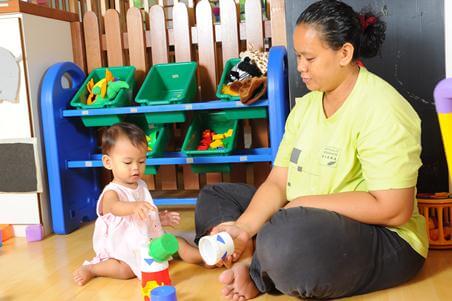 |
| | |
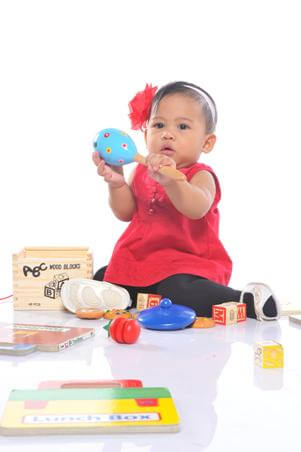
| Let’s explore.
Provide your child with rattles and soft toys that produce sounds when squeezed or shaken. Toys that require buttons to be pressed encourage your child to think about how they work. Aside from providing the materials, give sufficient space and time for your child to to experiment, problem solve and learn how things work. |
| | |
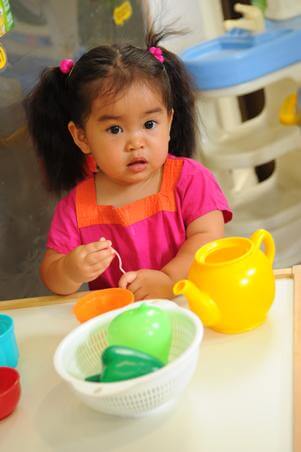
| Lay out a few plastic cups and have your child to place a straw in each cup.
When you set the table, your child can also help to place a spoon next to each plate. One-to-one correspondence or matching activities help your child to acquire number concepts. Young children learn best when they can relate to it in their everyday experiences. |
| | |
Keep on Counting!
Find opportunities for your child to count aloud. He can do that when putting toys away or during mealtimes, he can count the food types, the plates on the table, chopsticks, and even the chairs. By introducing numeracy in everyday activities, you are making counting fun. Counting aloud also helps your child learn the sequence of numbers. | 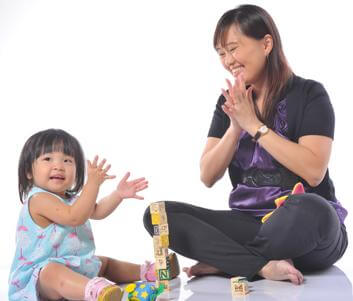
|
| | |
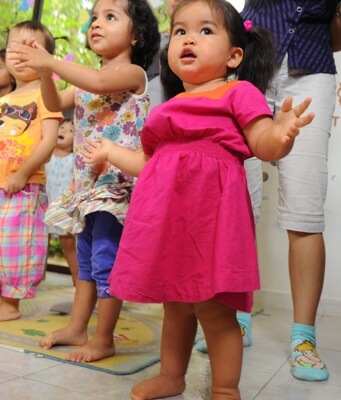
| Sing number songs or rhymes.
Popular titles like ‘One, Two, Buckle my Shoe’ and ‘Five Little Monkeys’ can be used to introduce your child to the world of numbers. Songs and rhymes are a fun way to help your child acquainted with music, rhyme, language and numbers. Make it fun and enjoyable so your child not only remembers longer, but becomes more eager to learn. |
| | |
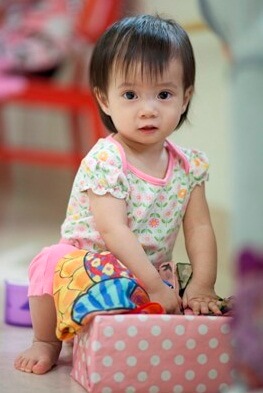
| Sort the laundry.
When you are done with the laundry, sort out the clothing items together with your child, the shorts in one pile and T-shirts in another. As you involve your child with simple chores like these, your child is getting acquainted with the processes of daily life. This enables your child to learn about the world around her and understand how things work. |
| | |
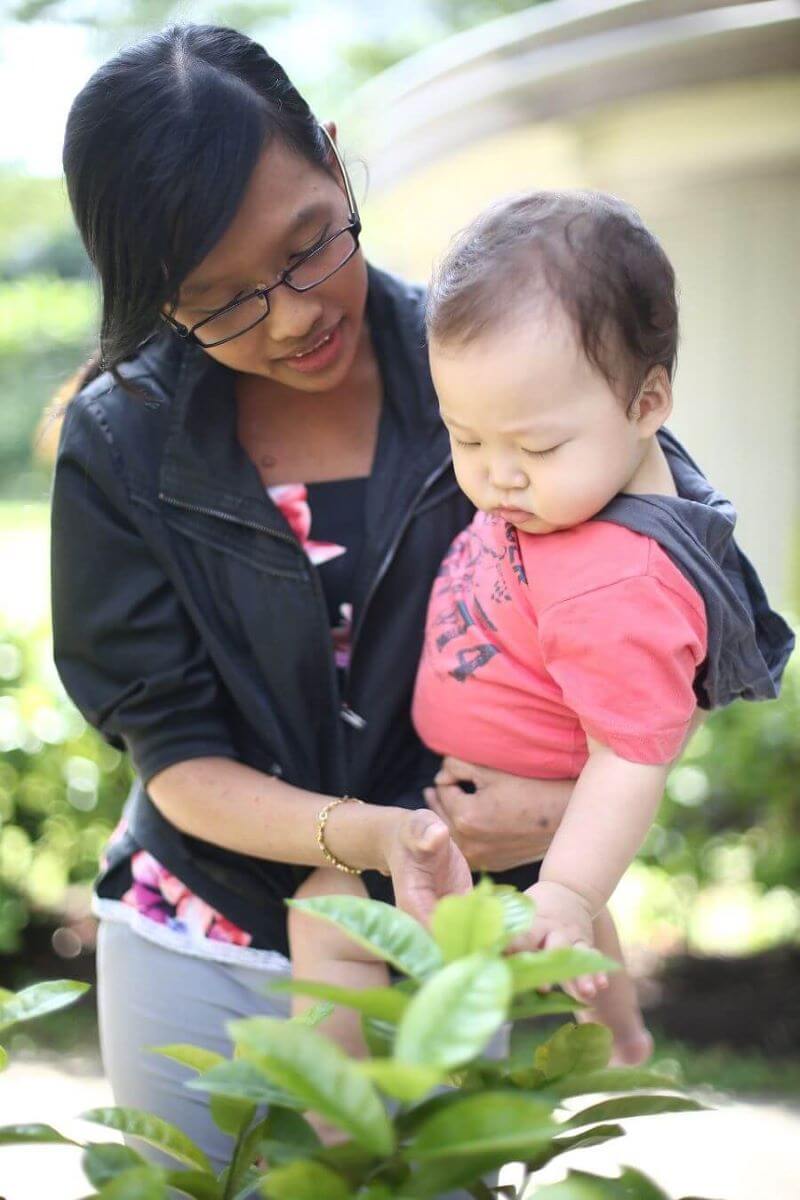
| Go on a treasure hunt with your child. Pick up differently-shaped leaves, pebbles, shells, twigs and other “treasures. Sort these out. Talk about the groupings, their differences and similarities. Examine their colours, textures and shapes. Once you are done, stick them up on a board with strong glue. This becomes a texture board for your child. Your child will enjoy the sensory play of exploring different textures. |
| | |
I can remember.
Your child’s memory skills can be enhanced through games. Let your child look at three to four pictures. Place them face down in the same position for your child to guess the picture. | 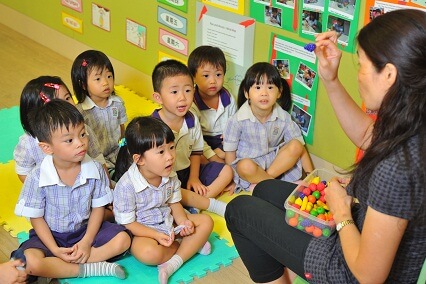 |
| | |
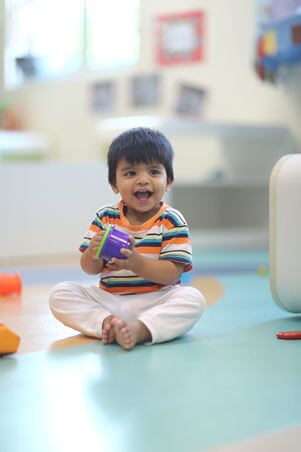
| Match!Provide your child with shapes such as squares, circles and triangles. Cut these out from a cardboard and have her match similar shapes. |
| | |
Play puzzles.
Provide your child with simple four-piece puzzles or puzzles with knobs to solve. | 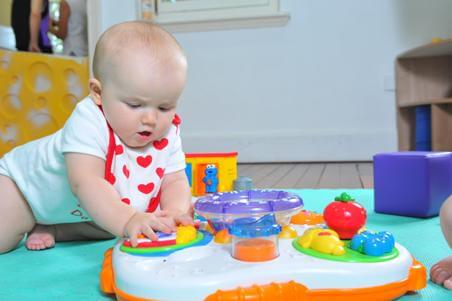 |
| | |
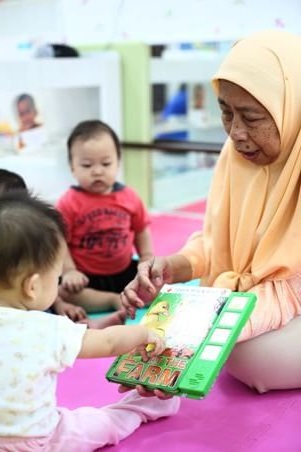
| Ask questions.
When sharing a book or looking at a picture with your child, begin your question with “I wonder why...”, “why do you think” or “what happens if”. |
| | |
Peek-a-boo.
Hide objects under a cloth and wait for your child to find them. | 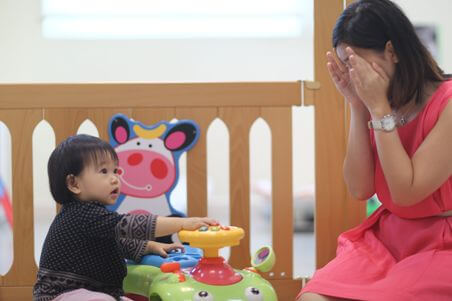 |
| | |

| Explore and experiment.
Make dough with your child. Talk about the texture, colour and taste, if applicable. It is all right even if your child says only a single word. |
| | |
Shapes galore!
Have your child name the shapes of objects and things in the house. Set up a corner or a table of objects and things of similar shapes for her to compare and contrast. | 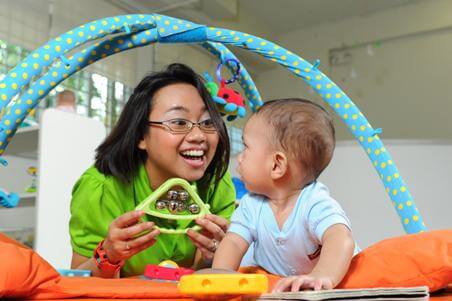 |

